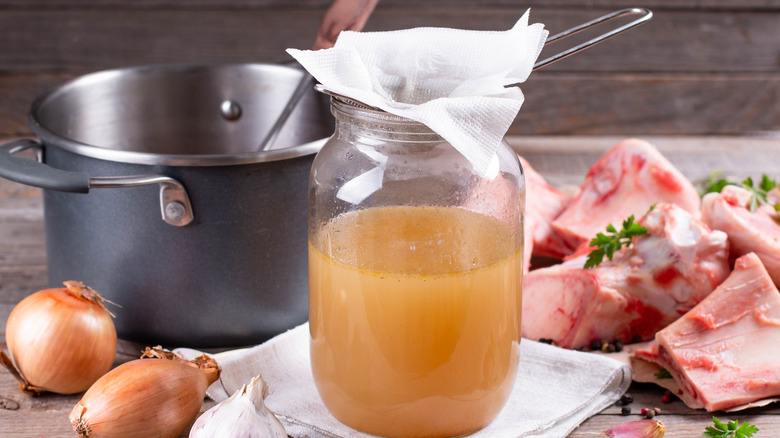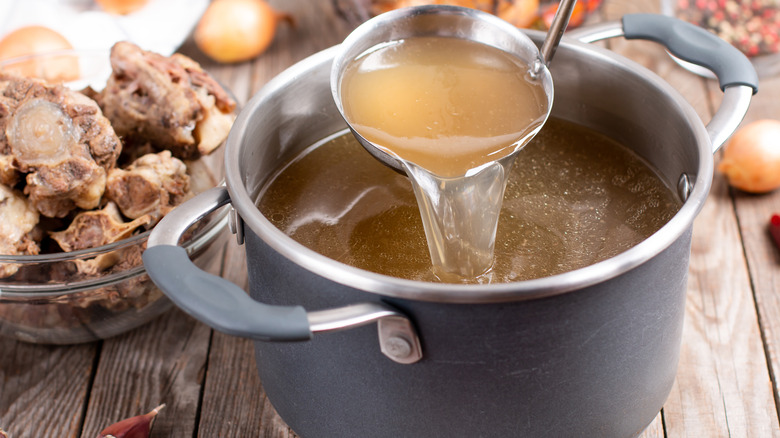Stock Vs. Bone Broth: What's The Difference?
We may receive a commission on purchases made from links.
Thanks to its health benefits and its collagen-boosting properties, not to mention the Paleo diet craze, bone broth has played an outsized role in our eating over the past decade. However, when confronted with all the various broth-like substances in the soup aisle — from stock to broth to bone broth — deciding what to drop in the grocery cart is overwhelming. Is there really a difference — apart from price — between all these meaty liquids? It turns out, yes.
According to Taste of Home, stock is made by simmering animal bones with a variety of herbs, spices, and vegetables in water. The bones can have some meat on them — although it's not a dealbreaker — and they can be roasted in the oven ahead of dropping them into the soup pop. Stock should simmer on the stove for three to four hours to extract the flavor as well as the collagen from the bones, which is what gives stock its gelatinous appearance when it gets cold.
Broth, on the other hand, is made from meat and/or vegetables and herbs simmered in water, writes Master Class. The plain broth simmer is quick, since it's made from poaching the meat rather than cooking the bones; a long poach could make the meat rubbery. Because of the comparatively short cook time, the taste is more delicate, which makes it a good substitute for butter or to infuse added flavor into cooked grains.
How is bone broth different?
Bone broth is essentially stock on steroids. Cooked from animal bones, low and slow is the way to go, needing an eight-plus hour simmer at minimum. Taste of Home explains that the longer simmer extracts even more healthful properties out of the bones, like electrolytes and amino acids in addition to the collagen proteins. So even though it's called "broth," bone broth has more in common with stock. Bon Appetit talked to Marco Canora, who literally wrote the book on bone broth, and he admitted that using the terms stock and broth interchangeably at first, "short-circuited his brain."
To make stock or bone broth, Bon Appetit suggests getting specific bones — ones with a lot of collagen, like neck bones or knuckles — from your local butcher. Marrow bones, the publication warns, shouldn't be used for bone broth or stock since the marrow is made of fat, not collagen. Because bone broth simmers for so long, the liquid will cook down considerably but you'll be left with a flavorful liquid that can be turned into a roasted garlic soup or simply sipped on its own for all its health benefits.

